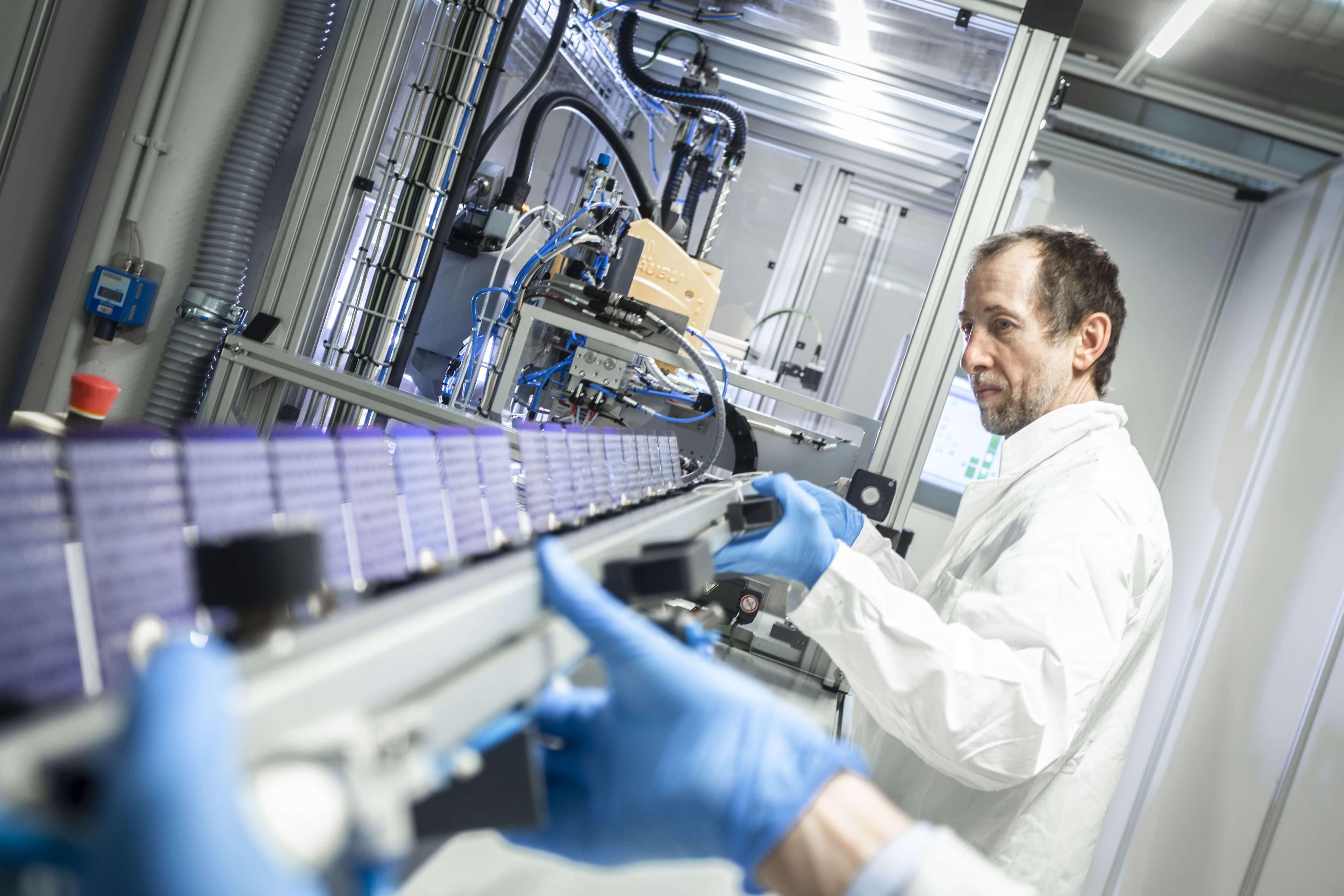
There are special requirements when joining the temperature-sensitive and thermomechanically demanding layers of silicon heterojunction and tandem solar cells. Traditional processes must be optimized and suitable materials used to ensure reliable bonding and module integration.
We develop low-temperature-based solutions for connecting silicon heterojunction or tandem solar cells using conductive bonding, smart wire connection (SWCT™) and soldering processes based on low-temperature solders. Our research focuses on low costs, mechanical stability and electrical performance.
Although the temperature requirements during lamination are not as high as for interconnection due to the lower process temperature, tandem solar cells still have to be laminated at particularly low temperatures. We develop special gentle yet fast processes and material combinations for this purpose. For moisture-sensitive (tandem) solar cells, we adapt the bill-of-materials (BOM) and develop and optimize edge sealing concepts.
Due to the special requirements of silicon heterojunction (SHJ) and tandem solar cells, we pay particular attention to a comprehensive characterization of the connection points as well as the solar cells themselves. Various methods are available for this purpose, which are described in detail in the area of junction analysis. In particular, we investigate the interaction of the interconnection processes with the sensitive microstructure of the layers. The influence of subsequent processes during module integration (lamination) and long-term stability are addressed in order to identify possible weak points.




